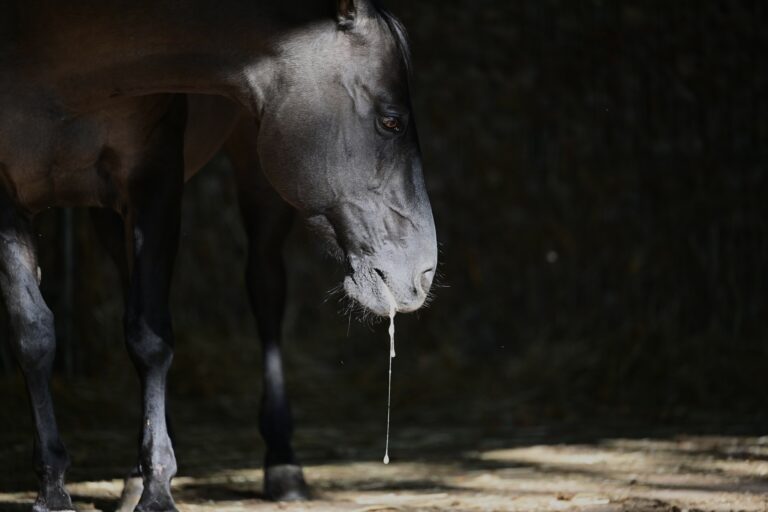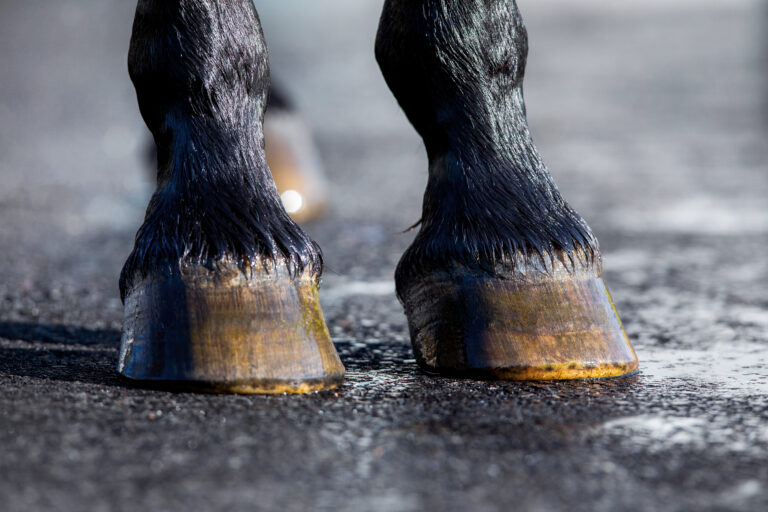
In this episode of the Disease Du Jour podcast, Alvaro Bonilla, DVM, MS, DACVS, discussed arthroscopy in horses. He explained different applications for arthroscopy, the benefits of minimally invasive and standing techniques, the development of wireless arthroscopy, and more.
Types of Arthroscopic Procedures
Arthroscopy is a general term for a keyhole procedure. Bonilla said there are two main types of arthroscopies: diagnostic and therapeutic.
Diagnostic arthroscopy involves entering a synovial structure to find the source of pain. If you already know the source of pain, therapeutic arthroscopy is used to address it.
“Not to say that sometimes a procedure may start being diagnostic, and during that procedure you find the source of the problem, and then it becomes therapeutic halfway,” Bonilla said.
Common Applications for Arthroscopy
Bonilla said the most common and simplest application for arthroscopy in horses is removing osteochondritis dissecans (OCD) fragments. “The hock, the stifle, and the fetlock are the most common regions where you will have that,” he said.
Arthroscopy is also applicable for traumatic fragments that occur from either a single trauma or repetitive trauma, which is common in racehorses. These cases typically involve fragments in the dorsoproximal P1, sesamoid, or carpus.
Bonilla said you can address soft tissue injuries with arthroscopy, including tendon injuries, ligament tears, and meniscal problems. The procedure is also helpful in treating cartilage abnormalities.
Diagnostic Procedures Prior to Arthroscopy
Radiography and ultrasonography are helpful to perform prior to arthroscopy. “You have to remember with radiography you see the main areas of a joint but not a joint completely,” said Bonilla. “Some studies have revealed that for many areas, ultrasound is actually more sensitive than radiography.”
As technology progresses, more advanced diagnostic techniques are becoming more commonplace, including CT, MRI, and standing needle arthroscopy, all of which can help inform the practitioner’s decision to perform arthroscopy.
Therapeutic Arthroscopy in Asymptomatic Horses
Bonilla said surgeons sometimes disagree about which fragments need to be removed, especially in asymptomatic horses.
“I will say probably more than 90% of the fragments need to be removed,” he said. While inflammation will subside on its own in some horses, the fragments can potentially create problems for the horse in the future.
“I will tell you over the years, I’ve dealt with many fragments that the owners have not removed right away or they have been recommended to wait because they weren’t symptomatic at that point,” Bonilla said. “There is not just my personal experience; there are several studies that have shown that those fragments will produce synovitis that will damage the cartilage over time because of the inflammation, or they will rub slowly in the cartilage, and you will have wear lines.”
Bonilla said his job is not to consider these horses sound for a week or month but to provide clients with a healthy horse for many years. Therefore, he recommends removing most fragments he encounters.
Fracture Repair
Another common application for arthroscopy is fracture repair, especially in racehorses. Typically, fracture repair involves using radiographs to help align pieces of bone within the joint. “But what you think radiographically is in perfect alignment, when you do have a camera and you’re looking into the joint, that may be 1-2 millimeters off,” said Bonilla. “For an athlete like a racehorse, 1-2 millimeters off is actually the difference between having an athlete continue to perform or having to retire a horse.”
Arthroscopy is also useful for obtaining a more accurate prognosis in fracture repair cases, as it can highlight the degree of cartilage damage.
Minimally Invasive and Standing Procedures
The bulk of Bonilla’s research has been on minimally invasive arthroscopic techniques and standing arthroscopic procedures.
Minimally invasive techniques involve making a smaller incision, which significantly reduces complications and morbidity and speeds up the rehabilitation process.
Standing arthroscopic procedures are still relatively uncommon, with a recent survey indicating only 18% of surgeons will perform the surgery standing. However, Bonilla said the standing procedure has many benefits.
One of the main benefits of standing surgery is avoiding general anesthesia, which has a mortality rate around 1% and a morbidity rate as high as 18%, according to some studies. The standing procedure also usually takes less time, and it is often easier to see the front of the joint.
“It’s definitely a procedure where you need to be very, very confident with the technique, and you have to do it quickly,” Bonilla said. “But if you are comfortable doing, for example, fetlock arthroscopy under general anesthesia, I will encourage people to try it standing because it’s definitely a good thing for the horse, and it’s actually probably less demanding technically.”
Wireless Arthroscopy in Horses
Over the past few years, needle arthroscopy has developed as a diagnostic technique, which can be a good alternative to CT or MRI. This technique involves placing an arthroscope the size of a needle into a joint, identifying the problem, and then addressing the problem either medically or with traditional arthroscopy.
As Bonilla was working with this technology, he got in touch with some MDs who developed what he believes is the first wireless arthroscope.
“The fact that you don’t need cables, it makes that arthroscope really a tool that you can transport anywhere,” he said. The doctors who developed the technology now use it when traveling to developing countries. Bonilla has used the technology to perform laparoscopies, and he has also started using it to perform standing arthroscopies.
“I don’t have to move the big tower from the OR to the surgery room when I do standing arthroscopy,” he said. “I just move my wireless arthroscope on my computer.”
Wireless arthroscopy is also a great tool for scoping multiple joints when you don’t have multiple towers. Bonilla will often involve an additional surgeon in these cases—one will telescope a couple of joints while the other uses the wireless arthroscope. This substantially reduces the amount of time the horse is under general anesthesia.
“I think wireless arthroscopy is something that we will probably use more and more of, at least as a complement of traditional arthroscopes,” Bonilla said. “And the price is actually substantially cheaper than the typical arthroscopic tower, so it could make it more affordable for many people as well.”
Final Thoughts
“I will encourage people not to be afraid of arthroscopy,” Bonilla said in closing. “It’s an extremely safe procedure with very low risk of complications.”
About Dr. Alvaro Bonilla
Alvaro Bonilla, DVM, MS, DACVS, obtained his veterinary degree in 2005 from the University of Cordoba. He then completed internships in Spain and Canada and an orthopedic research fellowship at the University of Pennsylvania. After this training, he went to The Ohio State University where he obtained a Master of Science focusing on the stifle and subchondral cystic lesions while simultaneously completing an equine surgical residency. In February 2015, he became a Diplomate of the American College of Veterinary Surgeons. After finishing his residency, he stayed at The Ohio State University as an Emergency and Surgery Clinical Instructor before joining the surgery team at the University of Montreal in 2016. There, he developed a research lab in clinically applicable and minimally invasive surgery that led to many publications regarding standing arthroscopy and minimally invasive procedures. In 2023, he moved back to the U.S. to join Tennessee Equine Hospital, where he now offers his services.
Related Reading
- Disease Du Jour: OCD in Horses
- Standing Surgery in Horses
- Racing Performance of Juvenile Thoroughbreds with Femoropatellar Osteochondrosis (OCD)
Stay in the know! Sign up for EquiManagement’s FREE weekly newsletters to get the latest equine research, disease alerts, and vet practice updates delivered straight to your inbox.




